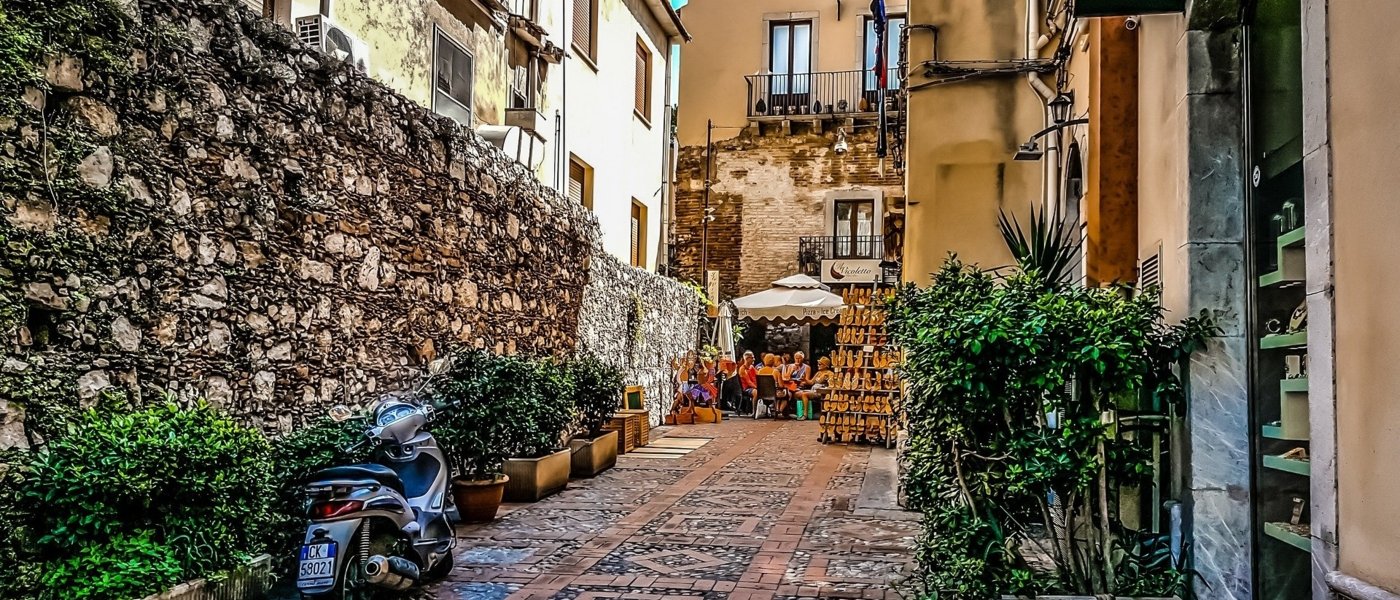Sicily is one of Italy’s most productive regions, perhaps most known for large quantities of IGT wine produced from international varietals or its signature grape, Nero d’Avola. Sicily boasts a total of 24 DOCs and 1 DOCG wine.
Sicily resembles a triangle and most of the Sicilian wine regions lie towards its three corners, or on its islands, where sea breezes, and altitude, help to temper the scorching heat and aid the retention of acidity and fresh fruit flavours.
Western Sicily
One historically important Sicily wine region, Marsala, where fortified wines are produced in an in perpetuum system similar to that of Jerez, lies at the western tip of the island. Marsala is nowadays produced principally from Catarratto, the island’s most planted, high-yielding variety. The nutty, alcoholic wines are best consumed as an aperitif. Sweet versions will make a perfect match for a typical Sicilian sweet, such as cannoli.
Other notable DOCs in the west are Erice, Delia Nivolelli, Alcamo and Contea di Sciafani.
North-eastern Sicily
The most important regions in the north-eastern part of the island are Etna DOC, where vines clinging to the volcanic black soils of Mount Etna produce Etna Rosso and Etna Bianco from Nerello Mascalese and Nerello Cappuccio, and Carricante, respectively. The same red grapes, along with splash of Nocera produce the wines of Faro DOC, right at the north-eastern tip, neighbouring Marmetino di Milazzo DOC, named after the town of Milazzo and the Capo di Milazzo peninsula jutting out into the Tyrrhenian Sea. The wine style produced here, Marmetino, has been produced since antiquity, but since 2004 has been legally protected with a defined region of origin. The original Marmetino was named after the Marmetini, an early people of the modern Messina province. There is no one single style for the modern wines – they comprise a basic rosso and bianco, each with a barrel-aged riserva form and a varietal form, all of which vary in sweetness from secco (dry) to dolce (sweet). It’s still a very traditional Sicilian wine, made from four of the region’s most idiosyncratic grapes – Nero d’Avola for the reds, and Grillo, Catarratto and Insolia for the whites.
Another enigmatic Sicily wine region lies just off the coast of Milazzo. Malvasia delle Lipari DOC is produced in the Aeolian Islands. A sweet passito wine with delicate aromas of apricots and honey. There is also a Salina IGT, which covers all the Aeolian islands and allows for a greater range of styles and varieties. Salina is another of the Aeolian Islands, famed for its capers.
South-eastern Sicily
The south-eastern part of the island boasts a cluster of Sicilian wine regions, including Sicily’s only DOCG, Cerasuolo di Vittoria, a blend of Nero d’Avola and Frappato. Its smaller brother, Vittoria DOC, is the largest DOC in this part of the island and its basic rosso uses the same blend. Three varietal wines are also permitted under the DOC – Nero d’Avola, Frappato and Insolia – along with an early-drinking novello similar to France’s nouveau wines.
Siracusa DOC and Noto DOC are known for their Moscato wines, both of which are produced from the Moscato Bianco grape variety and with the classic Moscato bouquet. These wines are more delicate than those of Moscato di Pantelleria, produced on the distant Sicilian island of Pantelleria. Like its more famous sun-dried sibling, Passito di Pantelleria, both wines in the Pantelleria DOC are produced from Zibibbo, the local variant of Moscato di Alessandria, and often considered coarser than Moscato Bianco.
Let our team of local experts at Wine Paths guide you through Sicily, wine country extraordinaire of southern Italy.
If you're interested in one of our Sicily Wine Tours, please visit this link.







